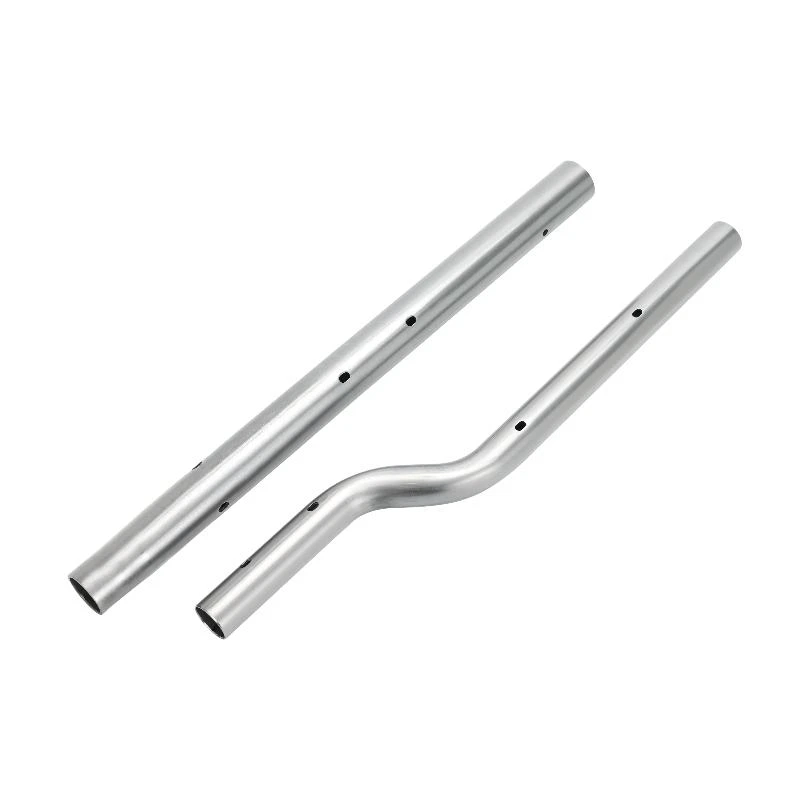

In the quest for greater fuel efficiency, the automotive industry has increasingly turned to lightweight design as a key strategy. By reducing the overall weight of vehicles, manufacturers can improve fuel economy, reduce emissions, and meet stricter environmental regulations. Cold drawn welded tubes play a crucial role in this process, offering the strength and durability required for critical automotive components while minimizing weight. This article explores how cold drawn welded tubes contribute to fuel efficiency in lightweight automotive design.
Lightweight design has become a cornerstone of modern automotive engineering, driven by the need to meet growing consumer demand for fuel-efficient vehicles and comply with stringent environmental standards. Reducing vehicle weight directly impacts fuel consumption; the lighter the vehicle, the less energy is required to move it. This results in improved fuel efficiency, lower emissions, and enhanced performance.
To achieve significant weight reductions, manufacturers are increasingly turning to advanced materials and manufacturing techniques. Cold drawn steel tubes(https://www.cbiestube.com/products/precision-tube-technology/cold-drawn-welded-tubes) are one such innovation, offering a combination of high strength, precision, and reduced weight that makes them ideal for various automotive applications. These tubes are particularly valuable in the production of structural components, where they can replace heavier, bulkier materials without compromising safety or performance.
Cold drawn welded tubes are manufactured through a process that involves drawing a welded tube through a die, which reduces its diameter and increases its strength. This process also improves the dimensional accuracy and surface finish of the tube, making it suitable for high-precision applications in the automotive industry. The result is a tube that offers excellent strength-to-weight ratios, allowing manufacturers to reduce the overall weight of components while maintaining their structural integrity.
The precision of cold drawn welded tubes is particularly important in automotive design, where tight tolerances are required for components to function effectively. Whether used in chassis, suspension systems, or engine parts, these tubes ensure that components fit together perfectly, reducing the need for additional material and weight. This precision also enhances the durability of automotive parts, as well-fitting components experience less wear and tear over time, leading to longer-lasting vehicles that maintain their fuel efficiency throughout their lifespan.
One of the primary applications of cold drawn welded tubes in the automotive industry is in the production of structural components. These components are critical to the safety and performance of the vehicle, requiring materials that can withstand significant stress while contributing to overall weight reduction. Cold drawn welded tubes are ideal for this purpose, offering high tensile strength and durability in a lightweight form.
In the design of vehicle frames, for example, cold drawn welded tubes can be used to create strong, lightweight structures that provide the necessary support without adding unnecessary weight. This not only improves fuel efficiency but also enhances the vehicle's handling and performance by reducing the mass that the engine must move. Similarly, in suspension systems, these tubes can be used to create components that are both strong and lightweight, improving ride quality and reducing fuel consumption.
The use of cold drawn welded tubes in lightweight automotive design has a direct impact on fuel efficiency and emissions. By reducing the overall weight of the vehicle, these tubes help to lower the amount of fuel needed to achieve the same level of performance, resulting in better fuel economy. This is particularly important in the context of increasing fuel prices and the global push for more environmentally friendly vehicles.
In addition to improving fuel efficiency, the use of lightweight materials like cold drawn welded tubes also contributes to a reduction in greenhouse gas emissions. Lighter vehicles require less energy to operate, which means that they produce fewer emissions over their lifetime. This is a key consideration for manufacturers looking to meet increasingly stringent emissions regulations and for consumers who are more environmentally conscious than ever before.
Moreover, the energy savings associated with lighter vehicles extend beyond fuel consumption. The manufacturing process for cold drawn welded tubes is also more energy-efficient than traditional methods, further reducing the overall carbon footprint of the vehicle. As a result, these tubes play a vital role in the automotive industry's efforts to create more sustainable, eco-friendly vehicles.
As the automotive industry continues to evolve, the demand for lightweight, fuel-efficient vehicles is only expected to grow. Cold drawn welded tubes will continue to play a crucial role in this evolution, offering the strength, precision, and weight reduction needed to meet future challenges. Advances in materials science and manufacturing techniques will likely lead to even more efficient production methods, further enhancing the benefits of these tubes in automotive design.
In addition to traditional internal combustion engine vehicles, cold drawn welded tubes are also expected to be integral to the development of electric vehicles (EVs). The weight reduction provided by these tubes is particularly important in EVs, where battery weight is a significant concern. By using cold drawn welded tubes in the construction of EV frames and other components, manufacturers can offset some of the weight associated with batteries, improving the range and efficiency of these vehicles.
Vehicle accessories play a vital role in the performance and driving safety of the vehicle. Only by purchasing from trustworthy manufacturers can the quality and precision be guaranteed.Hebei CBIES Automotive parts co., ltd is a leading manufacturer of automotive parts in China, With many years of industry experience and excellent reputation, is able to be come your reliable auto body parts supplier. Contact us now to get more information.